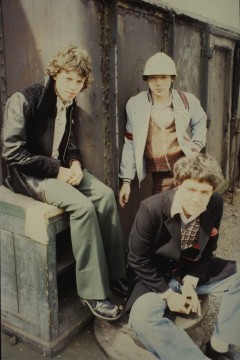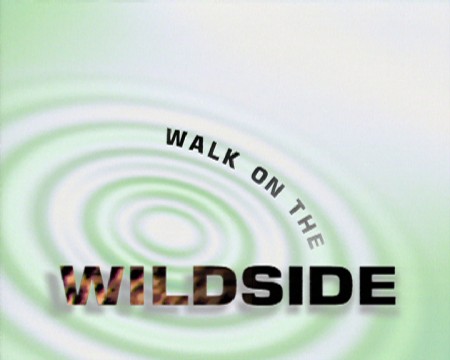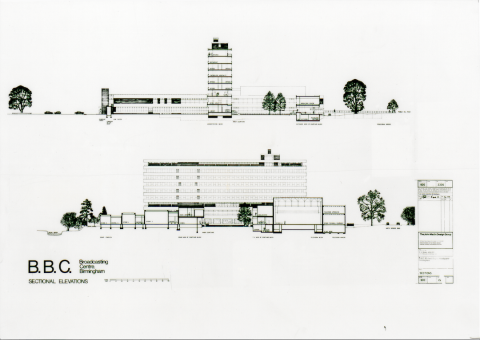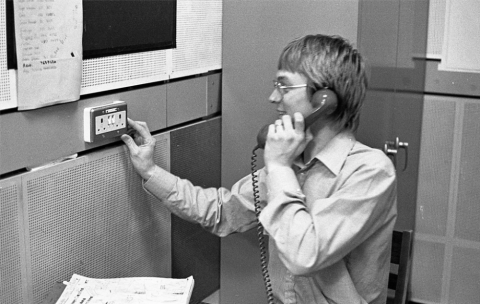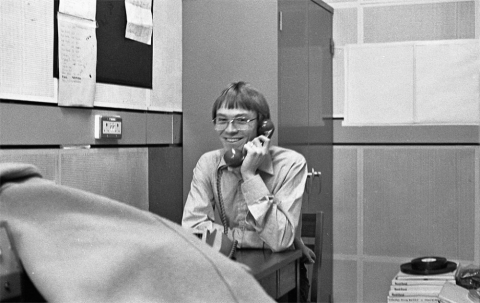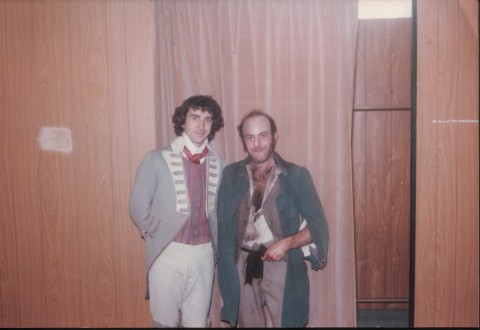
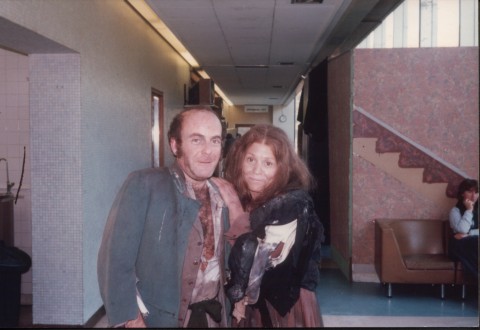
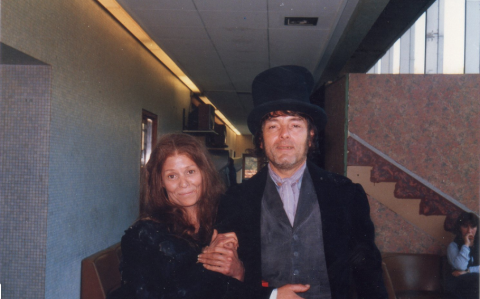
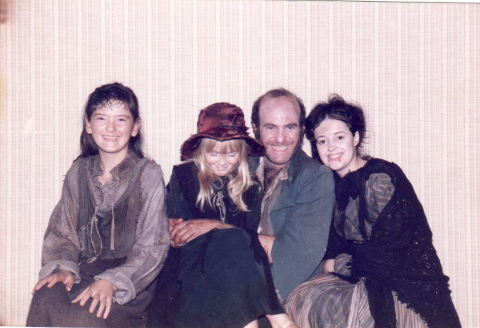
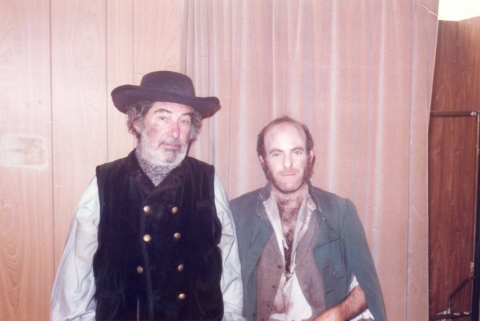
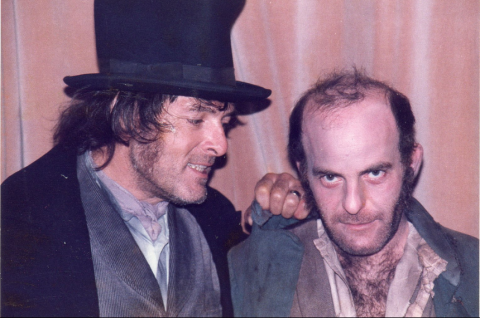
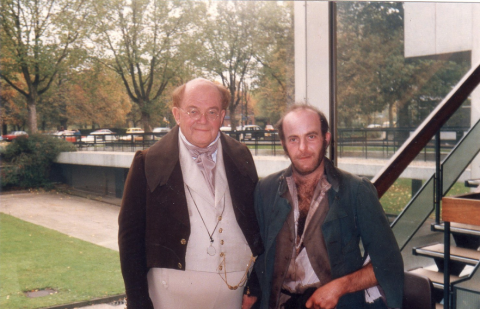
(Last photo: Phil Daniels and Nick Stevens)
(Second photo: Dee Hall and Nick Stevens, Dee was the second wife of Terry Hall of Lenny the lion fame )
Copyright resides with the original holders, no reproduction without permission.
I worked a lot for the BBC as a support artist on many dramas in the 1980s and on one occasion did in fact get some photos, this was on the production of Pickwick Papers in 1985. We spent two days in London for rehearsals then back to Pebble Mill for the production. Phil Daniels was a pleasure to work with and so was the late Nigel Stock. There was a scene when the lady with a baby was meant to fall down in the Fleet prison this she did with her real baby, to the shock of the crew. The baby was substituted for a dummy, then cut back to the real baby after she fell. Also I nearly got knocked out by the camera crane! I was walking down a passage in the Fleet prison and the camera mounted on a crane was supposed to come up and follow me. The camera was at a high point as it came up behind me and was dropping to a lower position, but the brakeman on the camera dolly did not judge it correctly and the front of the dolly platform under the camera hit me on the back of the head and shoulders sending me sprawling up the set! It looked funny, but not for me. At the end of each day I travelled back to Burton upon Trent still, with makeup on and looking like a vagrant, if I had been stopped the police would not have believed me as to where I had been!
Nick Stevens
The following comment was left on the Pebble Mill Facebook group:
Stuart Gandy: ‘I remember this from 1985, one of the many period dramas that Pebble Mill was well known for.’
